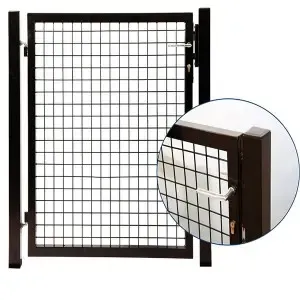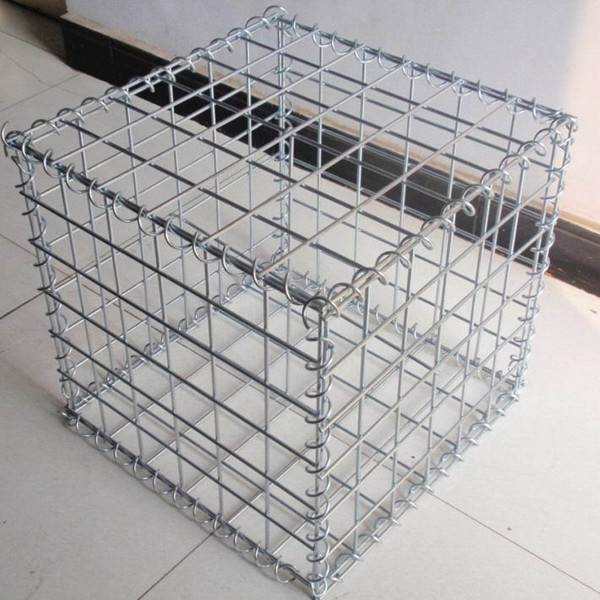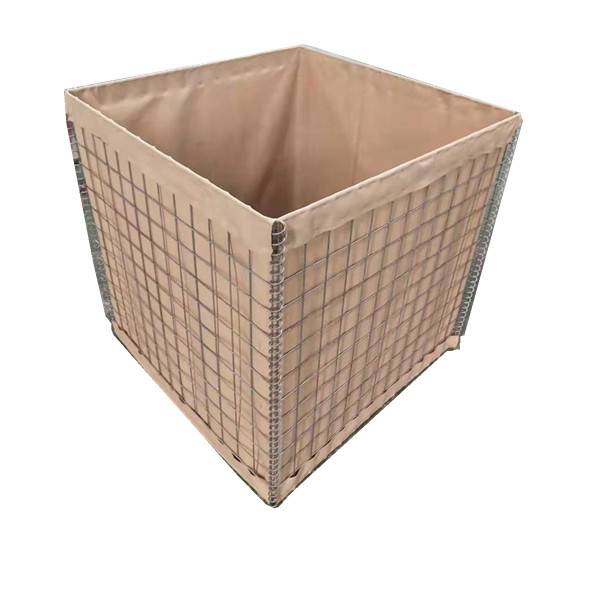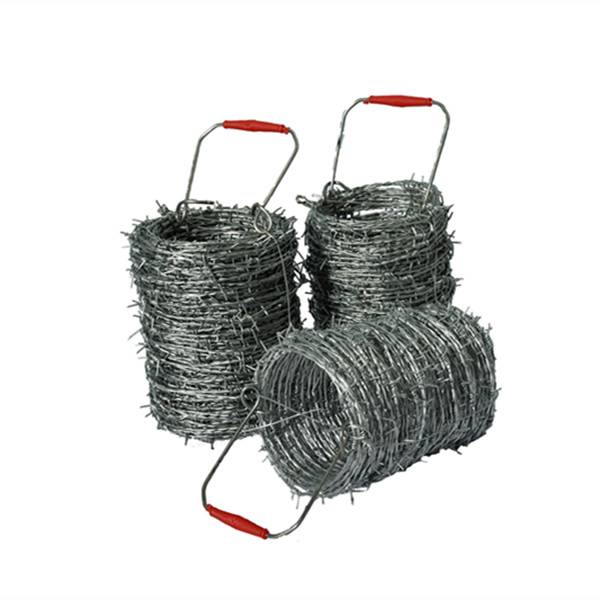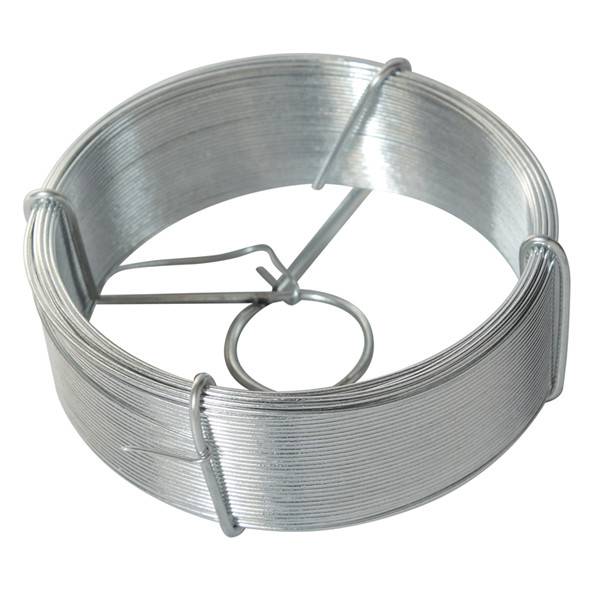
Aug . 31, 2025 20:42 Back to list
Razor Barbed Wire Enhances Security
In an era where security concerns are paramount, protecting assets, property, and personnel demands robust, visible, and highly effective deterrents. Perimeter security forms the critical first line of defense, and among the most formidable physical barriers available are razor barbed wire, concertina fencing wire, and integrated razor fence systems. These products represent a significant evolution from traditional barbed wire, offering unparalleled levels of intrusion prevention through their unique design and inherent psychological impact. The sight of gleaming, sharp blades coiled menacingly along a fence line sends a clear, unambiguous message: this boundary is not to be breached. Whether safeguarding critical infrastructure like prisons, military installations, and power plants, protecting high-value commercial assets, or securing private estates in high-risk areas, these solutions provide a tangible, passive defense mechanism. This article delves deep into the world of these advanced security wires and fences, exploring their construction, diverse applications, installation methodologies, critical specifications, selection criteria, maintenance needs, and addressing common inquiries. Understanding the capabilities and nuances of razor barbed wire, concertina fencing wire, and complete razor fence solutions is essential for implementing perimeter security that truly deters and delays potential threats.
The Anatomy and Diverse Applications of razor barbed wire
Razor barbed wire is fundamentally different from its agricultural predecessor. Instead of twisted strands with occasional sharp points, it features a continuous strip of high-tensile steel, precision-punched to create sharp, blade-like barbs along its entire length. These barbs are typically made from hardened steel and can be galvanized or stainless steel for enhanced corrosion resistance. The design focuses on creating multiple, severe cutting points rather than merely snagging or pricking.
Understanding the Structure and Deployment of concertina fencing wire
Concertina fencing wire takes the deterrent principle of razor barbed wire and transforms it into a three-dimensional, highly effective barrier. It consists of coils of razor barbed wire clipped together at regular intervals, forming large, cylindrical rolls that can be easily expanded and deployed. The name "concertina" derives from its resemblance to the musical instrument when compressed, and its ability to be stretched out.
Core Structural Elements:
- The Coil: The fundamental unit is a single, continuous coil of razor barbed wire, typically 50 feet (15 meters) or more in length when expanded.
- Clips: Stainless steel or galvanized steel clips hold adjacent loops of the coil together at precise intervals (e.g., every 3-5 loops). This prevents the coil from collapsing and maintains its open, obstructive form.
- Expansion: Deploying concertina involves stretching the compressed coil, causing it to expand dramatically in diameter while shortening in length, forming a dense, tangled barrier.
Deployment Methods:
- Single Coil Barrier: A single line of expanded concertina coils placed on the ground or mounted on a fence.
- Double Coil (Apache) Barrier: Two coils intertwined together, creating an exceptionally dense and difficult-to-penetrate barrier. Often used as a standalone obstacle.
- Top Guard (Fence Topping): Coils affixed horizontally along the top of an existing chain-link, welded mesh, or wall fence. This is the most common application, significantly enhancing the fence's security.
- Perimeter Enhancement: Lines of concertina placed parallel to the main fence, either on the ground or on low supports, creating a secondary obstacle zone.
Advantages of concertina fencing wire:
- Rapid Deployment: Pre-formed coils can be quickly unrolled and secured, making it ideal for temporary security needs or rapid reinforcement.
- Formidable Obstacle: The three-dimensional, tangled nature creates an extremely difficult barrier to climb over or crawl through.
- High Deterrence & Delay: The density and multiple blade points offer significant resistance, slowing down intruders considerably.
- Versatility: Can be used standalone, as topping, or in ground configurations.
Integrating Protection: Components and Construction of a Complete razor fence System
While razor barbed wire and concertina fencing wire are crucial components, a truly secure perimeter often requires a fully integrated razor fence system. This system combines the cutting deterrent of the razor wire with a robust structural framework designed to resist climbing, cutting, and impact.
The construction process emphasizes strength and precision:
- Site Survey & Planning: Detailed assessment of terrain, threat level, and required specifications.
- Foundation Installation: Digging post holes and pouring concrete footings to specified depths and diameters.
- Post Setting: Placing and aligning posts perfectly vertical (plumb) within the concrete before it sets.
- Framework Installation: Attaching top rails, mid-rails (if used), and bracing between posts.
- Fabric/Panel Installation: Attaching chain link fabric, welded mesh panels, or palisade pales securely to the posts and framework.
- Razor Wire Integration: Installing concertina fencing wiretopping, attaching razor barbed wire arms, or mounting coils on brackets with appropriate tensioning and clipping. This is a critical safety step requiring specialized equipment and PPE.
- Gate Installation: Hanging and aligning heavy-duty security gates.
- Ground Clearance & Skirting: Ensuring minimal gap at the bottom and installing anti-dig measures.
- Final Inspection & Tensioning: Checking all connections, tensioning wires and fabrics, and ensuring the entire system meets security specifications.
A well-constructed razor fence system is a significant physical and psychological barrier, acting as a powerful deterrent and a substantial delay mechanism against determined intrusion attempts.
Ensuring Long-Term Security: Installation Best Practices and Maintenance of Razor Fence Systems
The effectiveness of razor barbed wire, concertina fencing wire, and razor fence systems hinges not only on quality materials but also on correct installation and diligent maintenance. Cutting corners during installation or neglecting upkeep can significantly compromise security and longevity.
Critical Installation Best Practices:
- Safety First: Handling razor barbed wireand concertina fencing wire requires extreme caution. Mandatory PPE includes heavy-duty, cut-resistant gloves (Kevlar or equivalent), arm protection, safety glasses, and sturdy clothing. Never handle without proper protection.
- Robust Foundations: For razor fencesystems, post footings must be deep enough and wide enough, with sufficient concrete, to resist leverage attacks and environmental loads (wind, frost). Follow engineering specifications meticulously.
- Post Alignment & Strength: Posts must be perfectly plumb and aligned. Use heavy-duty steel posts appropriate for the fence height and expected load (especially for gates and corners supporting concertina fencing wiretopping). Brace corners and ends adequately.
- Secure Fabric/Panel Attachment: Chain link must be tensioned correctly; mesh panels must be securely bolted. Gaps or loose sections create weaknesses.
- Proper Razor Wire Handling:
- Anti-Climb Design: Ensure concertina fencing wiretopping or razor barbed wire arms project outward sufficiently to prevent bridging with ladders. Brackets should be angled correctly.
- Ground Clearance: Minimize the gap under the fence (ideally < 4 inches) to prevent crawling. Install anti-dig skirts if tunneling is a concern.
- Gate Security: Gates are often the weakest point. Ensure hinges are massive and welded/bolted securely, and locks (preferably multiple) are high-security. Protect gate tops with razor barbed wireor concertina fencing wire.
Essential Maintenance Procedures:
Regular maintenance is vital to preserve the integrity and deterrent effect of the razor fence:
- Scheduled Visual Inspections: Conduct thorough inspections quarterly, and after severe weather events.
- Vegetation Control: Maintain a clear zone (typically 3-6 feet) on both sides of the fence. Regularly cut back grass, weeds, and shrubs that could provide concealment or aid climbing.
- Prompt Repairs: Address any identified issues immediately:
- Corrosion Management: Touch up any damaged galvanizing with zinc-rich paint. For PVC-coated wire, repair coating damage with appropriate patching compounds to prevent rust underneath. Consider more frequent inspections in harsh environments.
- Foundation Checks: Periodically check for signs of concrete cracking or subsidence around posts, especially after ground movement or heavy frost.
Proactive maintenance ensures that the razor barbed wire remains sharp and threatening, the concertina fencing wire stays taut and densely coiled, and the entire razor fence structure continues to stand as an uncompromising barrier. Neglect leads to reduced effectiveness, increased vulnerability, and higher long-term replacement costs.
FAQS about Addressing Common Questions About Razor Fence Security
What are the main advantages of using concertina fencing wire over traditional barbed wire?
The primary advantages of concertina fencing wire lie in its three-dimensional structure and density. Unlike single strands of traditional barbed wire, expanded concertina creates a tangled, obstructive barrier that is significantly harder and slower to penetrate or climb over. Its multiple, closely spaced razor blades present a far greater physical threat and deterrent. Deployment is also much faster than stringing multiple strands of barbed wire. The visual impact of a coiled concertina fencing wire barrier is also far more imposing, signaling a high level of security.
How does razor barbed wire significantly enhance perimeter security compared to smooth wire?
Razor barbed wire transforms a passive barrier into an active deterrent. Smooth wire can be climbed, cut, or pushed through relatively easily. The continuous line of sharp, hardened steel blades on razor barbed wire makes climbing extremely hazardous, as it causes severe lacerations upon contact. Cutting through it is also much more difficult and dangerous. The very presence of razor barbed wire acts as a powerful psychological deterrent, discouraging attempts before they even begin, thereby significantly enhancing the security effectiveness of any perimeter it protects.
What are the critical factors to consider when installing a top guard with concertina fencing Wire on an existing fence?
Installing a concertina fencing wire top guard requires careful consideration: Post Strength: Existing fence posts must be strong enough to handle the additional wind load and potential weight/pressure of the coil. Weak posts may need reinforcement or replacement. Attachment Method: Use robust, purpose-made barbed wire arms or brackets designed for concertina. Standard chain link top rails are often insufficient. Projection Angle: Brackets should angle the coil outward to prevent ladders from being leaned against it effectively. Secure Clipping: Ensure the concertina coil is fully expanded and properly clipped together along its entire length before and after attachment. Safety: Installation is high-risk; absolute adherence to safety protocols with cut-resistant PPE is non-negotiable when handling concertina fencing wire.
How does a comprehensive razor fence system integrate with other security measures?
A razor fence system acts as the primary physical barrier but integrates synergistically with other security layers: Access Control: Strong gates within the fence are controlled by electronic systems . Lighting: Perimeter lighting eliminates shadows, making approaching or breaching the razor fence more difficult and enabling camera surveillance. CCTV Surveillance: Cameras monitor the fence line, providing real-time observation and recording of any intrusion attempts or tampering. Intrusion Detection Sensors: Systems like vibration sensors on the fence fabric, fiber optic cables, or PIR/microwave beams in the clear zone can trigger alarms if someone touches or approaches the razor fence. Patrols/Response: The delay created by the razor fence allows security personnel time to respond to detected intrusions. It forms the essential foundation upon which these electronic and procedural measures build.
What are the recommended maintenance intervals for inspecting and servicing razor barbed wire components?
Rigorous maintenance is crucial for razor barbed wire effectiveness: Visual Inspections: Should be conducted at least quarterly. Post-Event Inspections: Essential after any severe weather (high winds, storms, heavy snow/ice) or suspected/actual impact. Detailed Checks: During inspections, closely examine razor barbed wire strands for sagging, broken barbs, corrosion, and loose tensioning hardware. Vegetation contact should also be checked. Repairs: Any issues like sagging, broken barbs, or corrosion spots should be addressed immediately – re-tension, splice damaged sections, or treat corrosion. Don't wait for scheduled maintenance if problems are spotted earlier. Proactive care ensures the razor barbed wire remains a constant, reliable deterrent.
In the critical domain of perimeter security, complacency is not an option. Threats evolve, and the need for robust, reliable, and highly visible deterrents has never been greater. razor barbed wire, concertina fencing wire, and comprehensive razor fence systems stand as proven, formidable solutions that provide both a powerful psychological barrier and a significant physical obstacle to unauthorized access. From the continuous cutting edge of razor barbed wire to the dense, impenetrable coils of concertina fencing wire, and the integrated strength of a full razor fence structure, these technologies offer scalable security for applications ranging from maximum-security prisons and military installations to critical infrastructure protection and high-risk commercial or residential properties.
Don't leave your security to chance. Ensure your perimeter is protected by the industry's most effective deterrents. Contact our expert security consultants today for a comprehensive site assessment and tailored solution incorporating high-quality razor barbed wire, concertina fencing wire, and engineered razor fence systems. We provide only premium materials manufactured to the highest standards, backed by professional installation and support.
-
Custom Welded Wire Mesh: Durable, Versatile, and Sustainable Solutions for Global Applications
NewsNov.24,2025
-
Custom Weld Mesh – Tailored Solutions for Durable Industrial Fencing & Construction
NewsNov.24,2025
-
Comprehensive Guide to Chicken Welded Wire Mesh: Uses, Benefits & Suppliers
NewsNov.23,2025
-
BRC Weld Mesh – Durable Reinforcement Solutions for Modern Construction
NewsNov.23,2025
-
Durable BRC 3315 Mesh for Reliable Concrete Reinforcement | Hardware In Store
NewsNov.23,2025
-
Discover the Benefits of Green Weld Mesh – Durable, Sustainable Fencing Solutions
NewsNov.22,2025
Products categories





